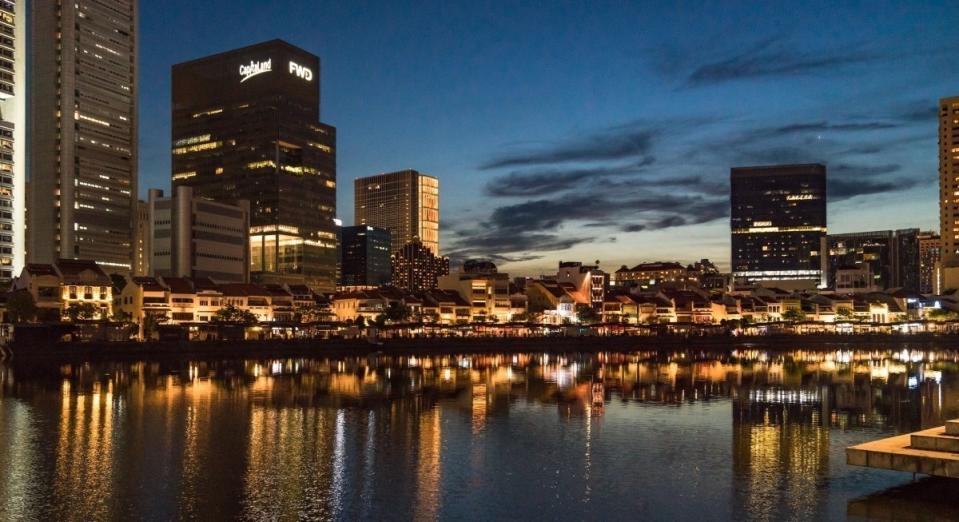Below-trend growth for Singapore economy in 2023 amid deteriorating global outlook: MAS

Inflation-growth dynamics of the global economy have turned less favourable in the past few months, says the macroeconomic review.
The Singapore economy is seen to grow at a below-trend pace next year as external headwinds intensify. The stark outlook comes as the inflation-growth dynamics of the global economy have turned less favourable in the past few months, says the Monetary Authority of Singapore (MAS) in its macroeconomic review on Oct 27.
MAS expects Singapore’s GDP to grow at 3% to 4% for whole of 2022, and moderate to a below-trend pace next year. On the other hand, sustained cost pressures will keep core inflation above its historical rate into 2023.
“Consumer price inflation (CPI) has been higher than expected in many economies. The step-up in inflation momentum, particularly in the advanced economies, has prompted a series of interest rate hikes by central banks, even as economic activity has started to plateau or slow,” it flagged.
With downside risks increasing, MAS is not ruling out the prospect of a full-year recession in Singapore’s key trading partners, although the US could still avoid a sharp full-year recession and the Asean region could show some resilience if the “disequilibrium phase” seen in the last few quarters does not tip into a “disorderly adjustment”.
Despite mounting external headwinds, the Singapore economy expanded in 3Q2022 following a sequential contraction in the preceding quarter, supported in part by industries which continued to benefit from the reopening of borders, it notes.
For one, travel-related activities staged a “marked improvement” in 2Q2022 and 3Q2022 with borders reopening, with monthly air passengers more than tripling in the second quarter of the year from the first. However, MAS warns that this growth momentum could ease as pent-up demand dissipates.
Meanwhile, growth of trade-related industries are weakening, with the global electronics industry now in a downturn.
Singapore’s index of industrial production grew by 3.2% q-o-q seasonally adjusted (SA) in 2Q2022, driven mainly by the biomedical cluster. In comparison, the chemicals and general manufacturing clusters contracted while the electronics cluster recorded only marginal growth.
The manufacturing sector shrunk by 3.2% in 3Q2022, while electronics output dropped by 13.3%, no thanks to the sharp downturn of semiconductors, as demand for end products such as PCs and smartphones weaken. At the same time, growth in global demand from 5G investments and data centres appeared to have peaked.
Core inflation to remain elevated
Meanwhile, Singapore’s imported inflation is to stay high, while the tight labour market will continue to support firm wage increases. On Oct 25, core inflation for September hit 5.3% — an increase from 5.1% recorded in August.
“Amid conducive demand conditions, businesses are expected to raise prices further to pass on imported and domestic costs that have accumulated within production chains in Singapore and abroad,” says MAS.
MAS projects core and headline inflation for 2022 to be at 4% and 6% respectively, with the former expected to remain elevated in 1H2023, before moderating more discernibly in the second half as cost pressures ease and demand conditions soften.
For 2023 as a whole, taking into account the GST hike, core and headline inflation are forecast to average 3.5% to 4.5%, and 5.5% to 6.5% respectively. Excluding the effects of the GST increase, which will be 8% from 7% now, MAS sees core and headline inflation are expected to average 2.5% to 3.5% and 4.5% to 5.5% respectively.
In this context, MAS says its series of policy moves to strengthen the Singdollar since late last year, will help dampen price pressures over the next few quarters, when inflation is likely to be at a peak. Specifically, the upward re-centring of the policy band will frontload the impact of the additional tightening on inflation in the immediate quarters ahead, it explains.
“The cumulative restraining effects of MAS’ moves since October 2021 will help ensure medium-term price stability as a basis for sustainable growth in the economy,” adds MAS.
See Also:
Click here to stay updated with the Latest Business & Investment News in Singapore
Get in-depth insights from our expert contributors, and dive into financial and economic trends

 Yahoo Finance
Yahoo Finance 